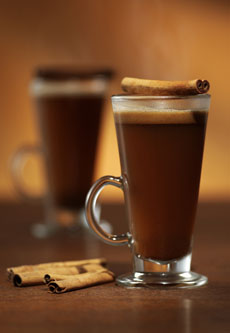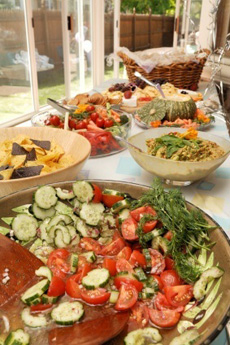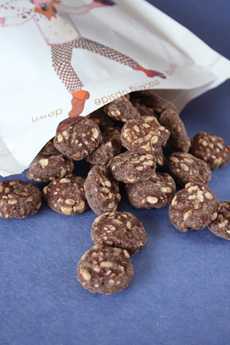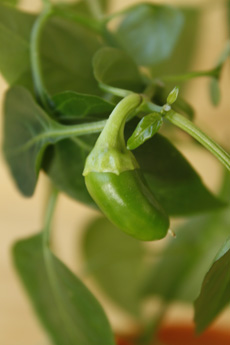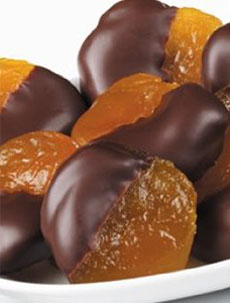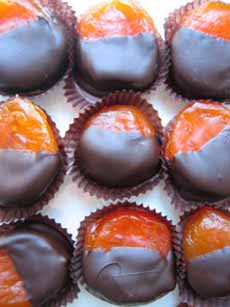|
The formal variation of this is French service, where dishes are brought to the table to be shown to the diners, and then carved and portioned at tableside by a butler or maitre d’.
BUFFET SERVICE
Buffet service is a self-service style where guests serve themselves from a sideboard or table. It can be a formal setting, a picnic table at a backyard barbecue or something in-between.
At a formal restaurant or catered buffet, there can be staff on hand to serve guests from behind the table (which takes the fun out of it, in our opinion), or simply to carve and serve roasts.
As with family-style service, guests have the ability to take only what they really want, and in the quantity they want it. (The down side is that people may also reach for seconds and thirds, “because it’s there.”)
No matter what the setting, buffet food can be formal or casual—while some people like fancy food, salads and sandwiches are popular buffet items. We like pasta bars for dinner, with guests able to create their own dishes by combining pasta, sauces and garnishes. The same works with burger and hot dog bars, taco bars or any other theme.
No matter what the food, a buffet is an opportunity to provide more condiments—chutneys, mustards, olives, pickles, relishes, different sauces—than table service. The result: You use up what’s in the fridge and pantry, and provide a larger symphony of flavors for guests.
For brunch, consider a yogurt bar and a cereal bar, with different types of fruits, nuts, seeds and milks (for example, rice milk and soy milk in addition to cow’s milk). The popularity of chains like Cereality and The Cereal Bowl—where customers top cereals with as many toppings as they like—prove that you don’t have to cook for days to show guests a good time.
Please share your favorite buffet ideas.
|
